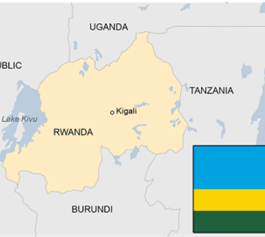TAG: GS-3: SCIENCE AND TECHNOLOGY
THE CONTEXT: Recently, the high mortality rate and rapid spread of the Marburg virus in Rwanda have raised concerns.
EXPLANATION:
About the Marburg virus:
The Marburg virus is a highly dangerous pathogen that causes Marburg virus disease (MVD), a severe and often fatal hemorrhagic fever in humans. It belongs to the same family of viruses as the Ebola virus (Filoviridae family) and is one of the deadliest pathogens known to infect humans.
- It is in the same family as the virus that causes Ebola virus disease.
- Two large outbreaks that occurred simultaneously in Marburg and Frankfurt in Germany, and in Belgrade, Serbia, in 1967, led to the initial recognition of the disease.
- The outbreak was associated with laboratory work using African green monkeys (Cercopithecus aethiops)imported from Uganda.
- Subsequently, outbreaks and sporadic cases have been reported in Angola, Democratic Republic of Congo, Kenya, South Africa and Uganda.
- There have been 12 major Marburg outbreaks since 1967, mostly in southern and eastern Africa.
Transmission:
- Once an individual is infected with the virus, Marburg can spread through human-to-human transmission via direct contact (through broken skin or mucous membranes) with the blood, secretions, organs or other bodily fluids of infected people, and with surfaces and materials (e.g. bedding, clothing) contaminated with these fluids.
- Human infection with Marburg virus disease initially results from prolonged exposure to mines or caves inhabited by Rousettus bat colonies.
- Rousettus is a genus of Old-World fruit bats or megabats. They are sometimes referred to as dog-faced fruit bats, or flying foxes.
Symptoms:
- After an incubation period of 2-21 days, symptoms include fever, chills, muscle aches, and bleeding. As the disease progresses, it leads to severe hemorrhaging, multi-organ failure, and shock, resulting in death in many cases.
- Symptoms become increasingly severe and can include jaundice, inflammation of the pancreas, severe weight loss, liver failure, massive hemorrhaging, and multi-organ dysfunction.
- The average MVD case fatality rate is around 50%. Case fatality rates have varied from 24% to 88% in past outbreaks depending on virus strain and case management.
Treatment:
- There is no treatment or approved vaccine for Marburg hemorrhagic fever. Supportive hospital therapy should be utilized.
- Supportive hospital therapy includes balancing the patient’s fluids and electrolytes, maintaining oxygen status and blood pressure, replacing lost blood and clotting factors, and treatment for any complicating infections.
- However, Polymerase Chain Reaction (PCR) and Enzyme-Linked Immunosorbent Assay (ELISA) testing can be used to confirm a case.
Additional information
- Rwanda is located in East Central Africa.
- It is a landlocked country.
- It borders Burundi, Uganda, Tanzania and the Democratic Republic of Congo.
- Capital – Kigali
- Currency – Rwandan franc

SOURCE:
Spread the Word
